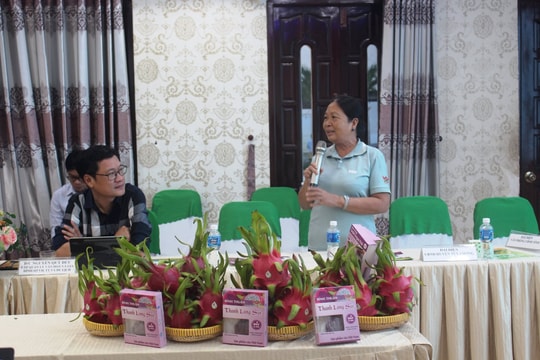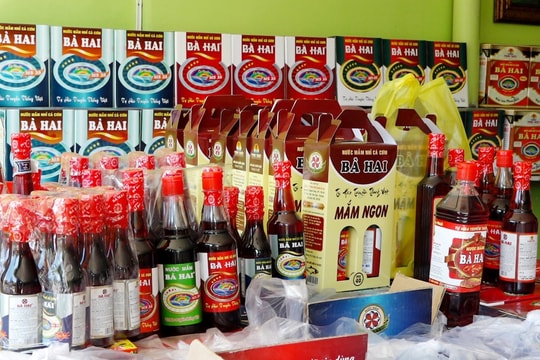 |
| Vietnamese Prime Minister Nguyen Xuan Phuc (L) and Minister of Industry and Trade Tran Tuan Anh, together with leaders of other RCEP member countries, witness the pact signing via videoconference on November 15, 2020. (Photo: VNA) |
1. Breakthroughs in international integration: Many initiatives initiated by the industry and trade sector during 2020’s Vietnam’s ASEAN Chairmanship have been effectively deployed. Vietnam signed, negotiated and successfully implemented several important trade agreements (FTAs).
International integration was an important highlight of the sector in 2020. Never before, just within a year, has Vietnam has joined three FTAs, including the Vietnam - European Union (EU) Free Trade Agreement (EVFTA), Regional Comprehensive Economic Partnership (RCEP) and Vietnam - UK Free Trade Agreement (UKVFTA), bringing the total FTAs that Vietnam has joined to 15 and opening the largest external market ever.
2. Despite the COVID-19 pandemic, exports maintained positive growth; the trade surplus reached a record high, and was maintained for the fifth consecutive year.
Vietnam's exports have reached most world markets. Many products have gradually gained a strong foothold and improved their competitiveness in many markets with high quality requirements such as the EU, Japan, the US and Australia.
By 2020, Vietnam had 31 export markets with a turnover of over US$1 billion, of which, five markets have a turnover of over US$10 billion and eight over US$5 billion.
3. Trade defence has achieved outstanding results, contributing to effectively protecting the rights and interests of Vietnam as it joined new generation FTAs.
In 2020, the number of new trade defence investigations for Vietnamese exports reached its highest level with 39 cases, an increase of 2.5 times compared to 2019. The Ministry of Industry and Trade strived to effectively handle such cases, ensuring the legitimate rights and interests of Vietnam's manufacturing and export industries.
So far, Vietnam has successfully taken 65 cases, helping many businesses and export products continue to enjoy 0% or very low tax rates (including some agricultural products and seafood), while maintaining export growth, especially to major markets such as the US, EU and Canada.
4. Market management witnessed breakthroughs after reorganising the market management force, contributing to improving market control efficiency.
After two years of reorganisation, the market management force has proven its effective operation in the fight against counterfeiting, contraband goods, and commercial fraud, as well as detecting and handling violations.
5. The processing and manufacturing industry overcame difficulties, continuing to rise strongly, and playing an important driving role in the country's economic growth.
In 2020, Vietnamese industries were heavily hit by the COVID-19 epidemic, but the Index of Industrial Production (IIP) for the whole year is still expected to increase by about 4%. For the whole 2016-2020 period, the average IIP of the whole sector increased by 8.1%, higher than the 2011-2015 period (7.3%).
Industrial restructuring is becoming more practical with a clear and positive shift in the right direction.
6. Oil and gas exploration and exploitation achieved positive results.
On November 16, the first gas stream from the Sao Vang - Dai Nguyet gas field was landed, with an annual output of about 1.5 billion m3 of gas and 2.8 million barrels of crude oil and condensate.
In July 2020, the 114-Ken Bau-2X well was completed at a depth of 3,690 m below sea level with the discovery of sizeable oil and gas reserves at 7-9 trillion cubic feet, contributing to the completion of the plan to increase oil and gas reserves in 2020. With the discovery, it is expected the Ken Bau gas field can be put into operation during the 2025-2030 period, contributing to ensuring national energy security.
7. The domestic market was strengthened and maintained, laying a firm fulcrum for production to overcome difficulties, recover and develop, contributing to the realisation of the Government's dual goals of "fighting COVID-19 while boosting socio-economic development”.
Right from the beginning of the epidemic outbreak in Vietnam, the Ministry of Industry and Trade has identified and proactively instructed and coordinated with localities to store goods and respond to all different levels of the disease’s development, helping stabilise the market and ensure the adequate supply of essential goods to serve people's demands in all situations, especially when the epidemic was particularly complicated.
8. Strongly renovating trade promotion, implementing a new hybrid model of trade promotion combining both online and offline forms, helping domestic businesses remotely access international partners amid COVID-19.
The Ministry of Industry and Trade has used information technology applications and social networks to create regular and fast connections amongst the system of Vietnamese trade agencies in foreign countries, business associations, domestic trade promotion organisations, enterprises, supplier and exporters. Through this connection network, hundreds of thousands of businesses across the country have been supported in seeking outlets for their exports.
9. E-commerce transforms, promotes efficiency, creates new impetus for economic growth.
Amid the difficulties caused by COVID-19, e-commerce has become a key strategic activity of many businesses, helping them develop safe new distribution channels. The e-commerce sector has witnessed explosive growth right after border trade was reconnected.
In particular, Vietnam Online Shopping Day 2020 recorded over 113 million views and consumer interactions on Online Friday's web platforms. The market recorded 3.7 million orders in 60 hours, up 267% over the same period last year.
10. Administrative reform, simplifying business investment procedures, building e-Government constantly reformed.
In 2020, the Ministry of Industry and Trade continued to be the pioneer in completing the reduction of business conditions by submitting to the Government for promulgation Decree No. 17/2020/NĐ-CP, thereby reducing and simplifying 205 business conditions under the State management function of the Ministry of Industry and Trade.
After only two adjustments cutting and simplifying business investment conditions, the ministry reduced and simplified a total of 880 conditions out of the total 1,216 (accounting for 70%).
Up to the present time, the number of business investment conditions under the management of the Ministry of Industry and Trade remains at 553 belonging to the 25 conditional business lines set in the Investment Law.
Source: NDO




















.jpg)




.jpeg)

.jpeg)


.jpeg)


